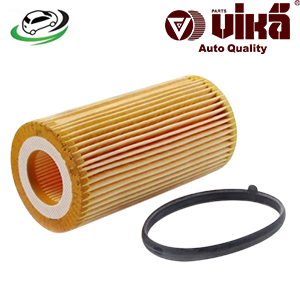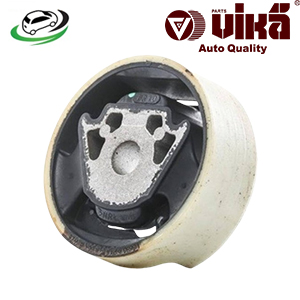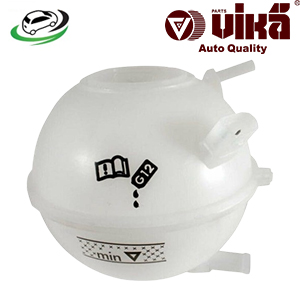-2%
Get Coolant Expansion Tank VW 337/20AE/ Golf IV/ Jetta IV/ Jetta IV GLI/ New Beetle/ R32 MKIV 1J0121403B
The coolant expansion tank, also known as a coolant reservoir or overflow tank, is a critical component of a vehicle’s cooling system. It plays a vital role in maintaining the engine’s temperature by managing the coolant level and allowing the system to expand and contract as temperatures fluctuate. Understanding how the coolant expansion tank functions, its benefits, and the importance of maintaining it can help ensure the longevity and performance of your vehicle’s engine.
The Role of the Coolant Expansion Tank
The coolant expansion tank is designed to hold excess coolant that expands due to the heat generated by the engine. As the engine operates, the coolant absorbs heat to prevent the engine from overheating. This heat causes the coolant to expand, increasing its volume. Instead of allowing this extra coolant to overflow or leak out of the system, the expansion tank provides a safe place for it to go. Once the engine cools down and the coolant contracts, the system draws the coolant back from the tank, maintaining a consistent level in the radiator.
This process helps to maintain the proper pressure within the cooling system, which is crucial for efficient heat exchange. The coolant expansion tank also serves as a visual indicator for the coolant level, allowing drivers to easily monitor and maintain the correct amount of coolant in the system.
Components of a Coolant Expansion Tank
The coolant expansion tank is a relatively simple component, but it includes several important parts that contribute to its functionality:
- Reservoir: The main body of the expansion tank is the reservoir, typically made from durable plastic. It is designed to withstand the high temperatures and pressures of the cooling system.
- Fill Cap: The expansion tank is equipped with a fill cap that seals the system and allows for the addition of coolant. The cap is usually designed to release excess pressure if it becomes too high, acting as a safety valve.
- Overflow Tube: The overflow tube connects the expansion tank to the radiator or the engine’s cooling system. This tube allows coolant to flow back and forth between the radiator and the tank as the coolant expands and contracts.
- Level Indicators: Most expansion tanks have minimum and maximum level indicators marked on the side, allowing drivers to easily check the coolant level and ensure it stays within the recommended range.
How the Coolant Expansion Tank Works
The operation of the coolant expansion tank is closely tied to the engine’s temperature and the behavior of the coolant as it heats up and cools down:
- Engine Warming Up: As the engine begins to run, the coolant circulates through the engine block, absorbing heat. As the temperature rises, the coolant expands, increasing in volume and pressure.
- Coolant Expands: The expanded coolant is directed into the expansion tank through the overflow tube. This process prevents the coolant from spilling out of the system or causing pressure to build up to dangerous levels in the radiator or engine block.
- Engine Cooling Down: When the engine is turned off and begins to cool, the coolant contracts and its volume decreases. The system then draws the coolant back from the expansion tank into the radiator or engine block, ensuring that the radiator remains full and that the engine is properly protected.
- Maintaining Pressure: The expansion tank helps to maintain the proper pressure within the cooling system, which is essential for the coolant’s ability to absorb and dissipate heat effectively.
Benefits of a Coolant Expansion Tank
The coolant expansion tank offers several key benefits that contribute to the overall health and performance of the vehicle’s cooling system:
- Prevents Overheating: By managing the expansion and contraction of the coolant, the expansion tank helps to prevent the engine from overheating. It ensures that the cooling system operates efficiently, even under varying temperature conditions.
- Reduces the Risk of Leaks: The expansion tank provides a safe place for excess coolant to go, reducing the risk of leaks in the radiator, hoses, or engine block. This helps to maintain the integrity of the cooling system and prevents costly repairs.
- Simplifies Maintenance: The expansion tank makes it easy to monitor and maintain the coolant level. The level indicators on the tank allow drivers to quickly check the coolant level without needing to open the radiator cap, reducing the risk of burns or injury.
- Protects the Environment: By containing the excess coolant, the expansion tank helps to prevent coolant from being released into the environment. Coolant is toxic and can be harmful to wildlife and the environment, so containing it within the system is important for environmental protection.
Signs of a Failing Coolant Expansion Tank
Like any component in the cooling system, the coolant expansion tank can develop issues over time. Recognizing the signs of a failing expansion tank can help prevent more serious problems:
- Cracks or Leaks: The expansion tank is often made of plastic, which can become brittle and crack over time due to the constant exposure to high temperatures. If the tank develops cracks or leaks, it can cause coolant to escape, leading to a low coolant level and potential overheating.
- Low Coolant Levels: If the coolant level in the expansion tank is consistently low, it could indicate a leak in the tank or elsewhere in the cooling system. Regularly checking the coolant level is important for catching this issue early.
- Discolored Coolant: The coolant in the expansion tank should be clean and the correct color for your vehicle’s coolant type (typically green, orange, or yellow). If the coolant appears discolored, murky, or rusty, it could indicate contamination or corrosion in the cooling system.
- Overheating Engine: If the engine is frequently overheating, it could be a sign that the coolant expansion tank is not functioning properly. A failing tank may not be able to hold the excess coolant, leading to insufficient coolant levels in the engine and radiator.
- Collapsed Hose: If the hose connecting the expansion tank to the radiator becomes collapsed, it could indicate a problem with the pressure within the cooling system. This issue can prevent the proper flow of coolant and lead to overheating.
Maintaining the Coolant Expansion Tank
Proper maintenance of the coolant expansion tank is essential for ensuring the longevity and performance of the vehicle’s cooling system. Here are some key maintenance tips:
- Regularly Check Coolant Levels: Make it a habit to check the coolant level in the expansion tank regularly. Ensure that the level is between the minimum and maximum marks on the tank. If the level is low, top it up with the appropriate type of coolant as specified by the vehicle manufacturer.
- Inspect for Cracks and Leaks: Regularly inspect the expansion tank for any signs of cracks, leaks, or damage. If you notice any issues, replace the tank immediately to prevent coolant loss and potential engine damage.
- Monitor Coolant Quality: Check the condition of the coolant in the expansion tank. If the coolant appears dirty or discolored, it may be time to flush the cooling system and replace the coolant with fresh fluid.
- Replace the Tank as Needed: Over time, the expansion tank may become worn or damaged. If you notice signs of deterioration, such as cracks or discoloration, it’s important to replace the tank to ensure the cooling system continues to function properly.
- Use the Correct Coolant: Always use the type of coolant recommended by your vehicle’s manufacturer. Mixing different types of coolant can lead to chemical reactions that may damage the cooling system components, including the expansion tank.
Follow us on Facebook for more parts.



